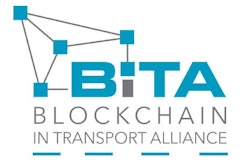
Earlier this year, Kuebix, the provider of an innovative transportation management system (TMS), predicted that 2018 would be a year of enormous change in the supply chain. With the half-way point of 2018 in sight, that prediction has proven to be true, with more and more companies turning to technology to increase efficiencies as constraints in the industry tighten.
The transportation industry is undergoing a revolution in part due to issues such as the ELD mandate, rising diesel prices, the capacity crunch, increased customer expectations, tariffs and more. Utilization of TMSs is at an all-time high, with Kuebix alone reporting adoption of its technology by over 11,000 companies. In 2018, technology is transforming logistics operations by providing shippers with the ability to improve customer service, sustain profits and capture much-needed capacity.
“So far, the transportation industry has weathered the challenges of 2018 well, but shippers who don’t begin embracing technology will continue to face increasing pressure in the coming months because of the changing supply chain environment,” says Dan Clark, Kuebix founder and president. “New regulations, a lack of drivers and the needs of digital-age consumers will cut into shippers’ bottom lines if not addressed. In order to combat these challenges, shippers must leverage technology to streamline their logistics operations.”
The ELD Mandate went live in April of this year and is serving to enforce the new hours of service (HoS) rules by automatically documenting true hours driven. Any form of unexpected delay can put a driver over their HoS. This forces the driver to stop for the night in order to stay within the daily 14-hour work day, of which only 11 hours can be used for driving, or else face strict penalties.
Many truck drivers have left the business because of this mandate, but the new rule appears to be here to stay. By embracing the mandate, shippers can turn the constraint into an opportunity to leverage technology to track their delays and put fixes in place to combat them. TMS can also reduce the number of trucks on the road and improve unloading and loading times by consolidating and optimizing loads. With the help of dock scheduling and yard management software, driver throughput can also be sped up, reducing delays and helping to keep drivers within their HoS.
Other issues that will continue to affect the transportation industry in 2018:
- Tariffs: The 25 percent tariff imposed on imported steel from the EU, Mexico and Canada, and the 10 percent tariff on aluminum will continue to trend. Many are predicting that the import duties will drive product prices up for the consumer. The day before the tariffs kicked-in, the stock market fell 250 points as people questioned the stability of the economy, foreseeing retaliation from countries affected by the tariffs.
- Diesel Prices: Diesel prices have already jumped 7 cents in recent weeks. To keep costs contained, businesses need to reduce mileage to help lower fuel usage.
- Higher Rates: Shippers are concerned with increasing transport rates from carriers. One method to keep rates level is to help make carriers more efficient with technology for shipment consolidation and yard management to maximize carrier capacity and minimize time wasted in the yard.
- Capacity Crunch: The continuing capacity crunch is getting worse, with some carriers saying they have 20+ loads to move per truck. By using a collaborative network of carriers, suppliers and fleet owners, shippers can have visibility to the best truck to move their product from original to destination.
- Customer Experience: E-commerce now makes up 17 percent of retail sales in the United States. Those consumers are demanding customer experiences to rival that of brick-and-mortar stores. To keep customers from purchasing from the competition, shippers must provide tracking statuses, shipping flexibility and improved delivery speed. Emphasis on the final mile is increasingly important for customer retention.
“Next-generation technologies like machine learning (ML) and artificial intelligence (AI) are growing in popularity within the industry by integrating with predictive analytics to fuel better decision making,” adds Clark. “Supply chains will only become smarter and more valuable as these technologies are integrated into applications. By adopting new technologies early, shippers can position themselves to compete in our increasingly digital industry.”



















